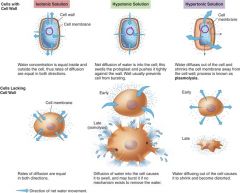![]()
![]()
![]()
Use LEFT and RIGHT arrow keys to navigate between flashcards;
Use UP and DOWN arrow keys to flip the card;
H to show hint;
A reads text to speech;
17 Cards in this Set
- Front
- Back
|
Simple Stain or positive stain
|
Stains the bacteria, positively charged stain sticks to negative charged bacteria
ex. methylene blue, crystal violet, safranin |
|
|
Negative stain
|
Stains the background, negative stain is repelled by bacteria but attracted to glass
ex. India ink |
|
|
Differential stain
|
allows the discrimination of one cell from another based on differential staining properties
|
|
|
Gram stain
|
the technique that separates bacteria into two groups gram positive and gram negative
|
|
|
Gram negative
|
A category of bacterial cells that describes bacteria with an outer membrane, a cytoplasmic membrane, and a thin cell wall
color pink |
|
|
Gram positive
|
A category of bacterial cells that describes bacteria with a thick cell wall and no outer membrane
Color purple |
|
|
Acid-Fast stain
|
a solution containing carbol-fuchsin which, when bound to lipids in the envelopes of Mycobacterium species, cannot be removed with an acid wash.
The mycolic acid must be melted with heat Red and green color |
|
|
Capsule stain
|
capsule will be stained purple and will have halo around it, if they don't have a halo their not capsulated
|
|
|
Endospore stain
|
Used to stain endospores heat fixed is used to get malachite green to stick to endospores while safranin is used to stain vegetative cells
|
|
|
Glucose Salt Agar
G.M.S.A |
If it grows its not fastidious if it doesn't grow it is
|
|
|
Trypticase Soy Agar
|
Tells you if its alive or not
|
|
|
E.M.B
|
If sample turns purple on E.M.B its a lactose fermenter, E.coli has green sheen on this one, and also if it grows its gram negative
|
|
|
Spectrophotometer
|
percent transmittance is high turbidity and optical density are low and vice versa
|
|
|
Percent transmittance
|
amount of light passing through a substance
|
|
|
Optical density
|
2-log%Transmittance
|
|
|
Dilution
|
sample/(dilutent+sample) = dilution
|
|

Hypotonic, Hypertonic, and Isotonic
|
salt concentration and where it moves
|

